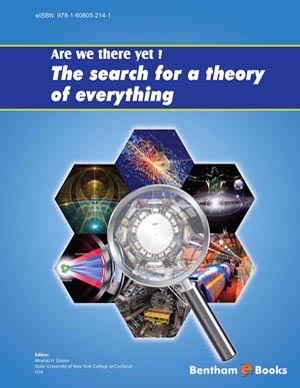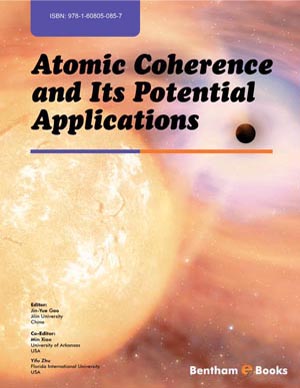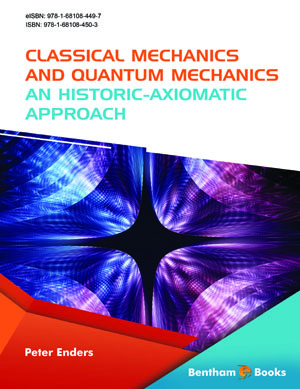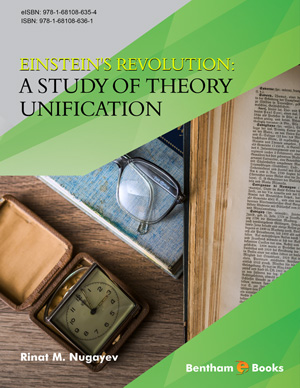Book Volume 2
An Introduction to Fluid-Porous Interface Coupling
Page: 3-12 (10)
Author: M. Ehrhardt
DOI: 10.2174/978160805254711202010003
PDF Price: $15
Abstract
The computation of numerical solutions to coupled flow problems in fluid and porous media is an important issue in many environmental and industrial problems. In this introductory chapter we shortly review suitable interface conditions for modeling the coupling of the porous medium flow with the fluid flow. We will discuss the two well studied cases of normal and parallel flow over a porous layer and focus on the later one.
After discussing different mathematical models this chapter mainly describes possible coupling strategies and interface conditions between the free fluid flow in the channel domain and the filtration velocity in the porous diffusion region.
The difficulty in finding effective coupling conditions at the interface between the channel flow and the porous layer lies in the fact that often, the orders of the corresponding (partial) differential operators in the fluid and porous domains are different, e.g. when using Darcy’s equation and (Navier-) Stokes equation. This situations makes it difficult from a mathematical point of view to find suitable interface condition, that are physical reasonable and lead to a well-posed problem. Alternatively, one can prevent this difficulty by applying the Brinkman model in the porous layer.
We will review different coupling strategies, e.g. the pioneering work of Beavers & Joseph, the later modification by Saffman and also its recent improvement by Le Bars & Worster. Finally, three different mathematical models for fluid–porous interfaces in a simple channel geometry are discussed and explicit Poiseuille-like solutions for the flow velocity are derived that can lead to semi-analytic numerical methods.
A short version of this introduction focusing on fuel cells was published in [10].
Modeling of Transfers at a Fluid-Porous Interface: A Multi-Scale Approach
Page: 13-31 (19)
Author: M. Chandesris and D. Jamet
DOI: 10.2174/978160805254711202010013
PDF Price: $15
Abstract
Free flows above porous medium are present in many industrial or environmental applications. To study such problems, a common approach consists of coupling a free fluid model with a porous model, the transfers that occur at the fluid-porous interface being modeled through appropriate boundary conditions. However, the determination of these boundary conditions is not trivial and remains an important issue for the study of practical applications. Here, we present a multi-scale method that allows to determine the form of the boundary conditions and the value of the jump parameters that appear in the expression of these boundary conditions. This theoretical approach allows to analyze the physical nature of the jump coefficients, to understand the importance of the interface location and to determine whether these jump coefficients are intrinsic parameters or not.
Numerical Methods for Subsurface Flows and Coupling with Surface Runoff
Page: 32-41 (10)
Author: P. Sochala and A. Ern
DOI: 10.2174/978160805254711202010032
PDF Price: $15
Abstract
Robust and accurate schemes are proposed to couple subsurface and overland flows by enforcing the continuity of the normal flux and the pressure. Richards’ equation governing the subsurface flow is discretized using a Backward Differentiation Formula in time and a symmetric interior penalty Discontinuous Galerkin method in space. The kinematic wave equation governing the overland flow is discretized using a Godunov scheme. Both schemes are individually mass conservative and can be used within coupling algorithms that ensure overall mass conservation owing to a specific design of the interface fluxes in the multi-step case. For field drainage problems, we also propose a method for representing drain tubes using Signorini type conditions. Numerical results are presented to illustrate the performances of the proposed algorithms.
Spectral Discretization of the Stokes Problem with Mixed Boundary Conditions
Page: 42-61 (20)
Author: K. Amoura, C. Bernardi, N. Chorfi and S. Saadi
DOI: 10.2174/978160805254711202010042
PDF Price: $15
Abstract
The variational formulation of the Stokes problem with three independent unknowns, the vorticity, the velocity and the pressure, was used to handle non standard boundary conditions which involve the normal component of the velocity and the tangential components of the vorticity. We propose an extension of this formulation to the case of mixed boundary conditions in a three-dimensional domain. Next we consider a spectral discretization of this problem. A detailed numerical analysis leads to error estimates for the three unknowns and numerical experiments confirm the interest of the discretization.
Decoupled Algorithms for the Coupled Surface /Subsurface Flow Interaction Problems
Page: 62-86 (25)
Author: M. Cai
DOI: 10.2174/978160805254711202010062
PDF Price: $15
Abstract
Research works on the coupling of incompressible surface flow with subsurface porous media flow arouse increasing interest recently. The coupled problems are typical multi-domain problems with multi-physics. Correspondingly, the heterogeneous partial differential equations for modeling these problems are coupled together at the interface between different domains. In the present work, we mainly study numerical methods for the coupled (Navier-) Stokes/Darcy models, which are typical models for stationary surface/ subsurface flow interactions. We propose several decoupled algorithms so that numerical computations can be realized in parallel. Specifically, we investigate decoupled preconditioning techniques and two grid algorithms. Numerical examples and mathematical analysis are given to show that these algorithms are effective and efficient.
Integrated Multi-Model Description of the Human Lungs
Page: 87-103 (17)
Author: C. Grandmont and B. Maury
DOI: 10.2174/978160805254711202010087
PDF Price: $15
Abstract
The respiratory system realizes the transfer of oxygen from the outside air to the alveolar membrane, through which it diffuses into the blood. As pure diffusion is far from being sufficient to realize that transfer, most of it is of advective type, and this advection is triggered by inflation-deflation cycles of the parenchyma. The mechanical part of the lungs can then be seen as a tree-like domain (conducting airways) embedded in an elastic medium. The flow in the upper part is inertial (incompressible Navier-Stokes equations), whereas inertia can be neglected for deeper branches (Stokes equations), which allows to use Poiseuille’s law for each branch, and consequently Darcy like equations on the corresponding subtrees.
We address here the delicate issues in terms of theory, numerics, and modeling, raised by the coupling of those models (Navier-Stokes, Darcy equations on a network, elasticity equations).
Multiscale and Multiphysics Aspects in Modeling and Simulation of Surface Acoustic Wave Driven Microfluidic Biochips
Page: 104-130 (27)
Author: H. Antil, R.H.W. Hoppe, C H. Linsenmann and A. Wixforth
DOI: 10.2174/978160805254711202010104
PDF Price: $15
Abstract
Microfluidic biochips are devices that are designed for high throughput screening and hybridization in genomics, protein profiling in proteomics, and cell analysis in cytometry. They are used in clinical diagnostics, pharmaceutics and forensics. The biochips consist of a lithographically produced network of channels and reservoirs on top of a glass or plastic plate. The idea is to transport the injected DNA or protein probes in the amount of nanoliters along the network to a reservoir where the chemical analysis is performed. Conventional biochips use external pumps to generate the fluid flow within the network. A more precise control of the fluid flow can be achieved by piezoelectrically agitated surface acoustic waves (SAW) generated by interdigital transducers on top of the chip, traveling across the surface and entering the fluid filled channels. The fluid and SAW interaction can be described by a mathematical model which consists of a coupling of the piezoelectric equations and the compressible Navier-Stokes equations featuring processes that occur on vastly different time scales. In this chapter, we follow a homogenization approach in order to cope with the multiscale behavior of the coupled system that enables a separate treatment of the fast and slowly varying processes. The resulting model equations are the basis for the numerical simulation which is taken care of by implicit time stepping and finite element discretizations in space. Finally, the need for a better efficiency and cost effectiveness of the SAWdriven biochips in the sense of a significant speed-up and more favorable reliability of the hybridization process requires an improved design which will also be addressed in this chapter. In particular, the challenge to deal with the resulting large scale optimal control and optimization problems can be met by the application of projection based model reduction techniques.
Introduction
Progress in Computational Physics is a new e-book series devoted to recent research trends in computational physics. It contains chapters contributed by outstanding experts of modeling of physical problems. The series focuses on interdisciplinary computational perspectives of current physical challenges, new numerical techniques for the solution of mathematical wave equations and describes certain real-world applications. With the help of powerful computers and sophisticated methods of numerical mathematics it is possible to simulate many ultramodern devices, e.g. photonic crystals structures, semiconductor nanostructures or fuel cell stacks devices, thus preventing expensive and longstanding design and optimization in the laboratories. In this book series, research manuscripts are shortened as single chapters and focus on one hot topic per volume. Engineers, physicists, meteorologists, etc. and applied mathematicians can benefit from the series content. Readers will get a deep and active insight into state-of-the art modeling and simulation techniques of ultra-modern devices and problems. The second volume of this series, titled Coupled Fluid Flow in Energy, Biology and Environmental Research covers the following scientific topics in the fields of modeling, numerical methods and applications: • Coupling between free and porous media flow • Coupling of flow and transport models • Coupling of atmospheric and ground water models This second volume contains both, the mathematical analysis of the coupling between fluid flow and porous media flow and state-of-the art numerical techniques, like tailor-made finite element and finite volume methods. Finally, readers will come across articles devoted to concrete applications of these models in the field of energy, biology and environmental research.








.jpg)




